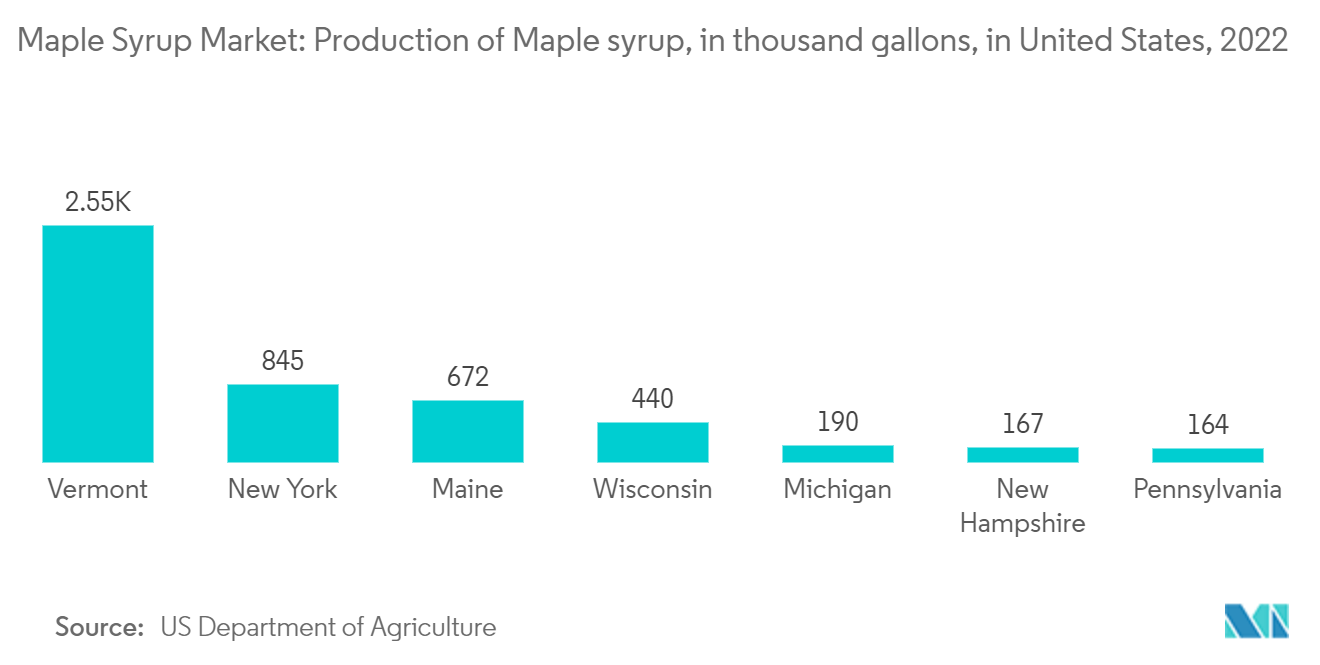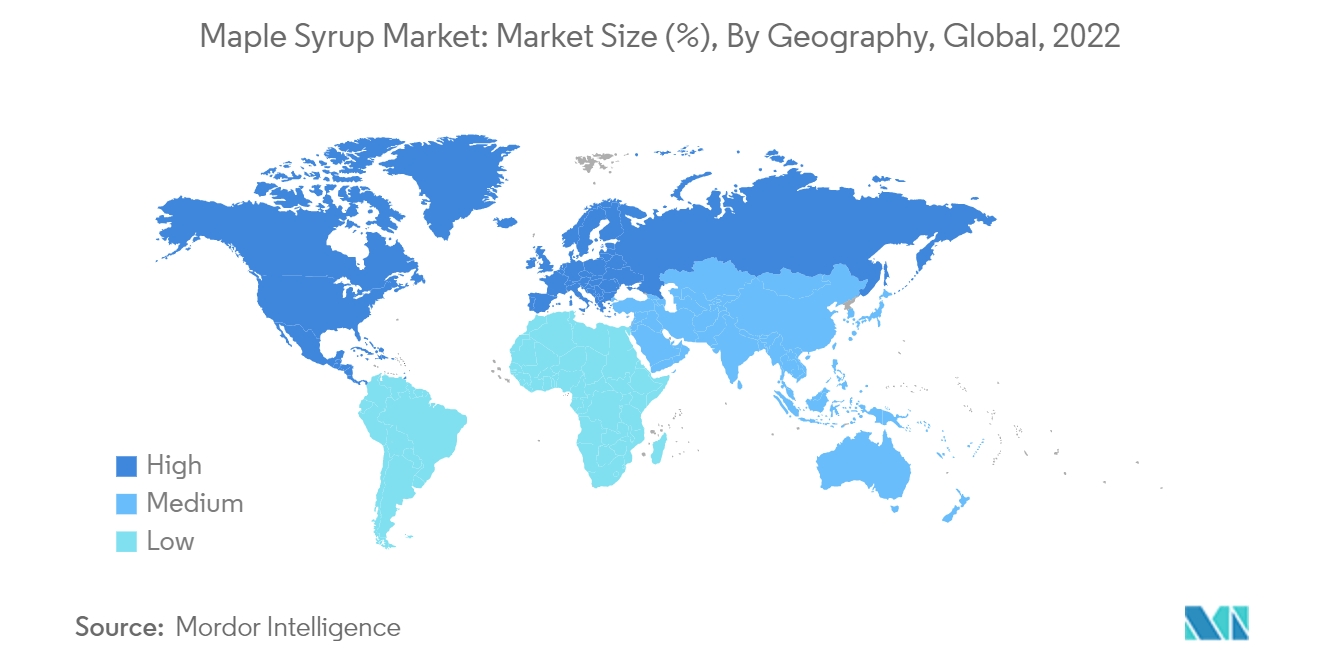Market Trends of Maple Syrup Industry
This section covers the major market trends shaping the Maple Syrup Market according to our research experts:
Utilization of Maple Syrup as a Flavoring Agent
The maple syrup market is most likely to witness significant growth due to increased demand for bakery applications such as waffles, pancakes, coffee cakes, and bread rolls. This growing production rate has been driving the overall market for maple syrup, thereby catering to the growing demand in developing regions. Many producers of maple syrup are expanding their product offerings owing to the demand for maple syrup as a flavoring agent in an assortment of food products. The aforementioned factors are expected to drive the growth of the maple syrup market. Due to the increase in health awareness among consumers and the numerous benefits of maple syrup, it is considered a healthy alternative sweetener to sugar and corn syrup, which is increasing the consumption of maple syrup as it is sophisticated, brings a change in consumer tastes, and has a high nutritional value when compared with sugar.
No specific substance or substances have yet been identified as possessing the "maple" flavor. However, it has been discovered that maple syrup contains a wide variety of flavorings. These mostly consist of phenolic, pyrazine, and carbonyl chemicals. These flavoring substances are a result of both the presence of certain substances (such as sucrose, reducing sugars, nitrogen-containing compounds, and soluble lignins) in the maple sap and the high temperatures used to transform the sap into syrup. One of Canada's most significant and well-known exports is maple syrup, which many Canadians associate with the arrival of spring and serves as a potent symbol of Canadian identity both at home and abroad. This factor has helped drive the market in the country over recent decades.

North America Leading the Market
The Federation of Quebec Maple Syrup Producers and the Vermont Maple Sugar Makers' Association are the two major cartels producing a major chunk of maple syrup. However, the stringent quota system and black marketing of maple syrup are hindering the overall market's growth. The opportunities in the North American maple syrup sector continue to grow due to the increasing availability of healthy maple trees and growing consumer demand for this natural product.
Canadian maple syrup is increasingly being utilized as an ideal alternative to sugar in a variety of foods, such as desserts and baked goods. According to Government of Canada reports, the Canadian maple syrup industry accounts for approximately 75% of the world's maple syrup production and is the leading global producer of maple products. The province of Quebec alone accounts for 89% of the country's maple syrup product distribution in Canada, while Nova Scotia accounts for less than 1%, 4% from Ontario, and 7% from New Brunswick. The United States is the second-largest producer in the world, contributing to around 24% of global production. Vermont, New York, and Maine contribute 45%, 19%, and 14% of the United States' production, respectively. For instance, Vermont, which will produce more than 2.5 million gallons of maple syrup in 2022, is the top-producing state in the United States. Almost all of the American production during that year was made up of this. Maple trees can have one to three taps to collect sap, depending on the size of the tree, and tapping them is a fairly straightforward process.


